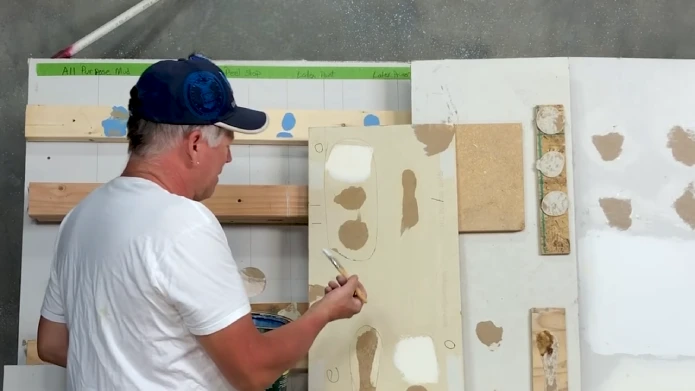Last Updated on March 5, 2023
Patching torn drywall paper can be an absolute nightmare. Not only does it make your home look less than desirable, but the weakened wall surface won’t hold up against life’s disruption either. Don’t let this pesky problem wreak havoc on your walls. Mudding over the damage is an effective solution.
Adding mud over torn drywall paper helps to restore a wall to its original condition. Not only does it make for seamless repairs, but this process also strengthens the entire area. But before you take on the task yourself, just remember that special know-how is needed to obtain quality results.
Check out this handy guide. We’ll explore the process of mudding over torn drywall paper and discover its potential plusses as well as its downsides to watch out for.
How Can You Mud Over Torn Drywall Paper?
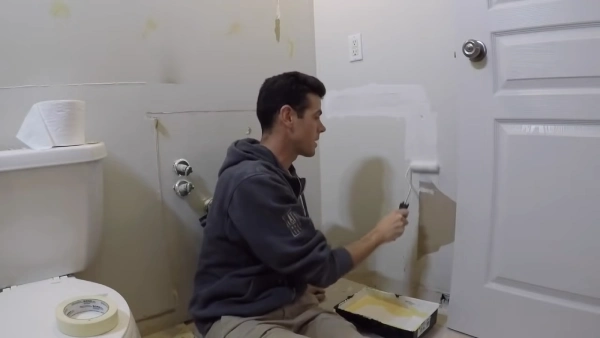
Repairing torn drywall paper is an important skill to have if you are a homeowner. By following a few simple steps, you can quickly and easily repair the damage, ensuring that your walls look great and remain in good condition.
Here’s a quick run-down of the process:
Gather Materials:
- Drywall knife or putty knife
- Sandpaper, fine or medium-grit
- Joint compound (mud)
- Drywall paper tape
Step 1: Preparation of Surface
Before you can begin to mud over torn drywall paper, it is important to properly prepare the area. This includes scraping away any loose pieces of torn paper or plaster. Also, vacuuming away any debris or dust from the area and sanding down any rough edges around the torn area.
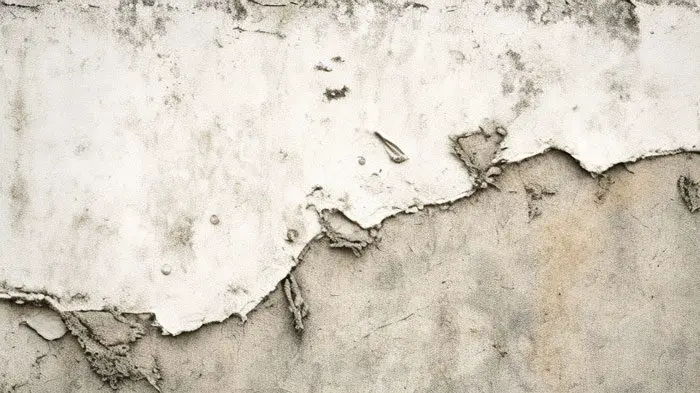
You may also need to use a putty knife to scrape off any stuck-on dirt or dust particles to ensure a smooth surface for mudding. Once the surface is clean and prepped, it’s time to move on to step two.
Step 2: Mixing the Joint Compound
A joint compound is used as a filler when mudding over drywall paper. Mixing the joint compound requires a bucket and enough water to make a paste-like consistency.
Start by adding dry powder joint compound into the bucket, then gradually mix in water until you achieve your desired consistency. Be careful not to add too much water, as this will make the application more difficult.
Step 3: Applying the Mud
Once your joint compound mixture has been prepared, you are ready to begin mudding over your torn piece of the torn drywall paper. Start by spreading a thin layer of the compound onto one side of the tear with your tool (putty knife, trowel). Then use your tool to smooth out any clumps as best as possible.
Ensure you go over each side of the tear evenly so that there are no gaps or lumps between them when finished. It may be helpful to practice on scrap wood before applying it directly onto your wall.
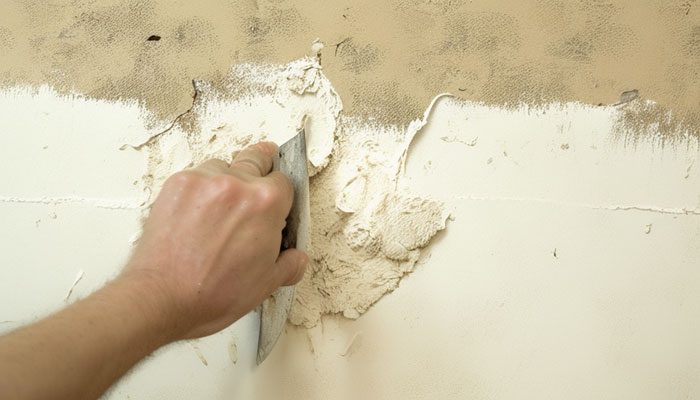
When finished, allow the drywall mud plenty of time to dry completely before applying additional coats if needed. Ensure each layer is completely dry before applying another layer if you are applying multiple coats. This will help achieve an even finish without bumps or ridges in between layers of drywall paper and joint compound mixture.
Step 4: Finishing Touches
After successfully spreading mud over your drywall paper, it’s time for some final touches. Before painting over the area with your desired shade or texture, use fine-grit sandpaper to smooth down any bumps or ridges left behind by the application processes prior.
Afterward, use a damp cloth or sponge to wipe off any excess mud before applying primer across the entire patched area. In the end, finish by painting according to your desired color palette.
Pros and Cons of Mudding Over Torn Drywall Paper
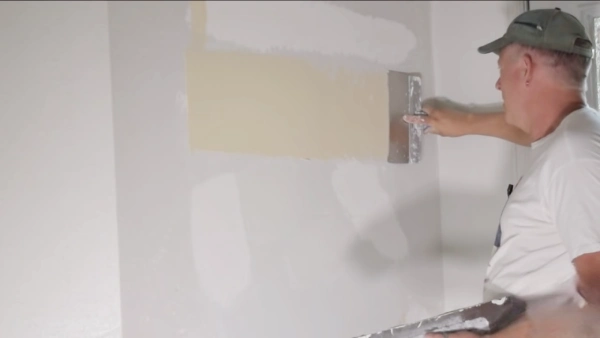
While mudding is a great way to smooth out damaged drywall surfaces, there are pros and cons to consider before taking on this home renovation project.
Here are some potential benefits and drawbacks:
Advantages:
- Repair minor wall damage quickly and easily.
- Prevents further moisture damage.
- Enhances aesthetic appearance.
- Offers a cost-effective repair solution.
- Easier than replacing the entire drywall paper.
- Cost-effective solution.

Disadvantages:
- Requires special skill level and tools.
- Possibility of creating an uneven surface.
- If not done correctly, there’s a chance for uneven repairs.
- This can be messy, and additional clean-up is required.
Reasons Why You Shouldn’t Skip Mud Over Torn Drywall Paper
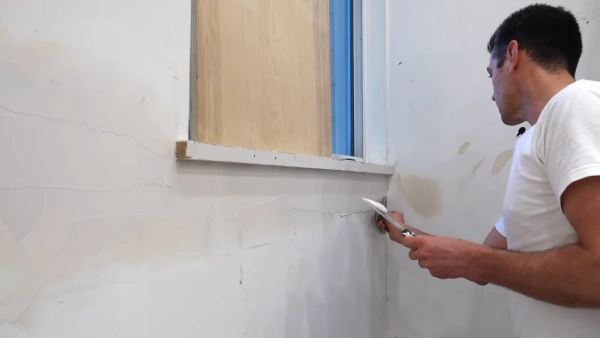
It may seem like a small step, but when it comes to repairing drywall paper damage, don’t skip the mud. Here’s why not to avoid mud over torn sheetrock:
1. Rapid Degradation: If you don’t mud over torn drywall paper, the wall’s protective surface will be compromised, and its vulnerability to water damage and mold growth will increase. This can lead to rapid degradation of the wall’s structure and ultimately result in costly repairs.
2. Unattractive Finish: Without mudding over a tear in drywall paper, the gap will be open to the air and the eye of anyone who looks at the wall. It’s important to note that even if the tear is small, it can still compromise the overall aesthetic of your room or space.
3. Unnecessary Stress: Failing to fully seal a tear in drywall paper adds unnecessary stress to your walls. Once cracks develop from pressure, it can be difficult (if not impossible) to repair them without taking off some of the drywall layers or replacing sheets altogether.
4. Poor Air Quality: A gap in drywall paper can allow unseen air pressures like drafts or a lack of insulation to enter your walls and cause poor air quality. Both are hidden until they become visible problems appearing as issues with your heating and cooling systems.
5. Structural Hazards: Left unsealed, an open tear in drywall paper can give way to structural hazards like uneven walls and crumbling edges. Which may indicate a bigger problem than just a simple gap. These signs point to potential water damage or other structural issues.
6. Time-Consuming Fixes: Without mudding over torn drywall paper, you will have to spend more time repairing any damage that accumulates later. Something that most people would rather avoid doing than take on immediately when first noticed.
7. Loss of Property Value: Even if all other reasons don’t convince you why you should mud over torn drywall paper, consider that leaving such a gap open could eventually lead to loss of property value. During inspections or when buyers discover hidden damages created by ignoring this necessary fix within the environment of their home.
Some Recommended Mud for Sealing Torn Drywall Paper

Sealing up a tear in drywall paper requires more than just your typical fix-it job. You need the right quality sealant to guarantee that it’s done properly and luckily, you have plenty of options.
You can use the following muds:
Innovative Joint Compound
This innovative joint compound works to create a permanent and long-lasting torn drywall repair. It’s perfect for various projects, from walls and ceilings to furniture and fixtures.
Its feather-light formula has been designed to reduce the strain on your hands, making it easier and faster to apply. Plus, it dries quickly, so you won’t have to wait too long before applying paint or other finishing touches.
Wallboard Joint Compound
The wallboard joint compound is ideal for all your wall patching, filling, and skimming needs. This durable drywall compound features minimal shrinkage and sands easily, making it the perfect solution for various projects.
Whether you’re tackling a large-scale renovation or simply sprucing up a few walls, you can trust that our joint compound will deliver maximum performance with minimal effort.
Drywall Patch Repair Kit with Scraper
This incredible product contains everything you need to repair and patch up wall holes, chips, scratches, and dents. The kit features a professional-grade metal scraper that is designed to quickly fix and level out any uneven surfaces.

It also comes with materials such as drywall mesh tape, joint compound, and sandpaper for added convenience. All of these products are 100% safe for both children and pets, making them perfect for homes with kids or furry friends running around.
Heavy Duty Wall Repair Spackling
It’s the most effective solution for strong, durable repairs for walls, ceilings, cracks, and small and large drywall holes. Unlike other spackling products that can be difficult to spread and control, this stuff spreads evenly and quickly over affected areas without sagging.
What Type of Mud Should Be Used For Torn Drywall Paper?
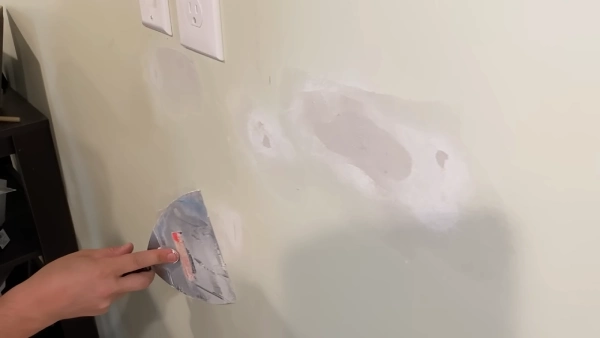
For fixing up torn drywall paper, wet mud is the perfect solution. Its superior adhesion and flexibility will seal up all those cracks so your wall can look like new. Plus, you get peace of mind knowing that this handy stuff was made for jobs like yours, and repairs won’t have to be on your agenda anytime soon.
When using wet mud for repairs, you should apply two coats over the damaged area and then sand it down gently with fine-grit sandpaper once it’s dried. As well as paying attention to details when repairing torn drywall paper, ensuring that any tears or gaps are filled correctly. This will help blend the patch with the existing wall texture seamlessly.
Make Walls Last: Repairing Tears with Mudding
Overall, mudding over torn drywall paper is a great way to repair walls’ tears and ensure they stay strong for years. The above factors must be taken into consideration before embarking on this process.
Doing so will ensure you get the most out of your repairs and keep your home looking its best. With all of these details in mind, you can rest assured knowing that your walls will be as good as new after mudding them up.
